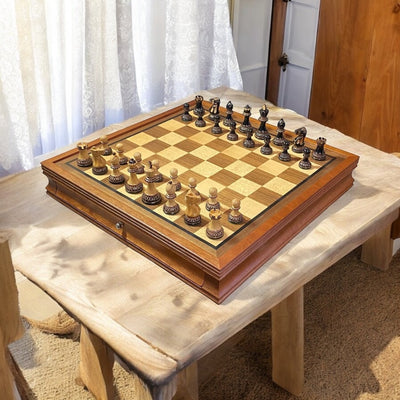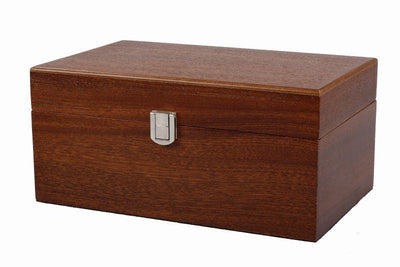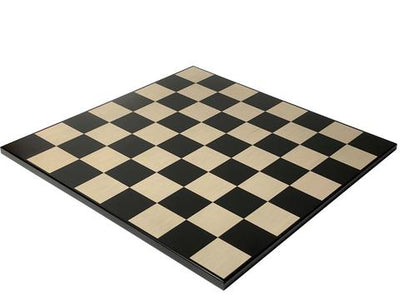The Ultimate Guide to Chess Set Materials: Discover the World of Staunton Chess Pieces
When it comes to chess, the quality of your chess set can significantly affect your playing experience. From casual games with friends to high-stakes tournaments, the materials used in chess sets can impact aesthetics, tactile feel, and durability. In this comprehensive guide, we’ll explore the various materials used in chess sets, with a focus on the esteemed Staunton chess pieces that have become standard in the chess-playing world. By understanding the advantages and characteristics of different materials, you can make an informed decision on your next chess set purchase.
The Importance of Material in Chess Sets
The material used to create chess pieces can dramatically influence the game. Each material has its unique properties that cater to different preferences, budget ranges, and gaming environments. Here’s why it matters:
- Durability: Some materials withstand wear and tear better than others, ensuring longevity.
- Weight: Heavier pieces can provide stability during play, while lighter ones can be more manageable.
- Aesthetics: The appearance of your chess set plays a critical role, especially for display purposes.
- Feel: The tactile sensation of the pieces can greatly enhance the enjoyment of each game.
A Deep Dive into Different Materials
Wood
Wooden chess pieces are the traditional choice for many chess enthusiasts and are often the go-to material for Staunton chess pieces. They offer warmth, beauty, and a classic feel that plastic or metal cannot replicate. Here are some popular types of wood used in chess sets:
- Rosewood: Known for its rich color and fine grain, rosewood offers elegance and durability.
- Briarwood: This wood is resistant to damage and often used for high-quality chess pieces.
- Maple: Sometimes used as a contrasting material in chess sets, maple is appreciated for its light color and smooth finish.
- Ebony: Recognized for its dark hue, ebony adds sophistication and a luxurious touch to any playing set.
Many chess purists prefer wooden sets for tournaments since they enhance the overall atmosphere of the game. The craftsmanship involved in creating Staunton chess pieces from wood also adds to their collectible appeal.
Plastic
Plastic chess pieces are a popular choice for beginners and casual players. They are generally more affordable and come in a variety of colors and styles. Here’s why plastic may be your favorite:
- Economical: Plastic chess sets are accessible to all budgets, making them great for starting players.
- Lightweight: Easy to carry and travel with, plastic pieces are convenient for on-the-go players.
- Diverse Designs: Unlike wood, plastic can be molded into various styles, including fun and themed sets.
While Staunton chess pieces are typically crafted from wood or high-quality resin, plastic sets can often mimic the Staunton style, providing a functional alternative for casual players.
Metal
Chess sets crafted from metal offer a contemporary aesthetic that stands out on any tabletop. The main materials include:
- Brass: Known for its weight and durability, brass chess pieces exude a sense of luxury.
- Stainless Steel: Resistant to tarnishing and rusting, stainless steel pieces are practical and elegant.
- Aluminum: Lightweight yet sturdy, aluminum pieces can be a modern alternative for players seeking something unique.
Metal Staunton chess pieces often contain intricate designs that appeal to players who appreciate artistry in their game. However, they may not be as comfortable to move as wooden or plastic counterparts during intense play.
Glass
Glass chess sets are increasingly popular among collectors and display enthusiasts. Known for their artistic appeal, they add a touch of elegance to any room. Below are some reasons to consider glass chess pieces:
- Beauty: Glass pieces come in various forms, including clear, frosted, or tinted, providing a visual spectacle.
- Unique Designs: Many glass chess sets feature artistic shapes that make them true conversation starters.
- Display-Ready: Ideal for showcases, glass chess sets can serve as decorative pieces when not in use.
While aesthetically pleasing, glass Staunton chess pieces might not be the best choice for serious players due to their fragility.
Hybrid Materials
As the market evolves, so do chess sets, which now often integrate various materials. Hybrid chess pieces may combine wood with resin, metal, or other materials to enhance durability and aesthetics. These sets can provide the best of both worlds:
- Durability: For example, a wood-resin combination can enhance the longevity of wooden pieces.
- Aesthetic Appeal: Mixing materials opens up a plethora of design possibilities.
- Unique Touch: Hybrid sets often come with unique finishes and color combinations, appealing to creative players.
Choosing hybrid Staunton chess pieces allows you to stand out on any chessboard while ensuring a robust playing experience.
Considerations When Choosing Your Chess Set Material
When selecting the right material for your chess set, consider the following factors:
Gameplay Experience
How often do you play? For casual games, plastic or hybrid options may suffice. If you're an avid player, investing in a wooden or metal Staunton chess set could enhance your overall experience.
Skill Level
If you're new to chess, starting with a budget-friendly plastic set can help you practice without breaking the bank. As you progress, you might want to transition to wooden or more professional options.
Display vs. Functionality
Are you purchasing a chess set for practical games or as a decorative item? If display is your primary focus, consider unique glass or artfully crafted wooden sets. For competitive play, choose a durable, classic Staunton set.
Maintaining Your Chess Set
Caring for your chess set is essential for longevity, regardless of the material. Here are some tips:
- Wooden Sets: Keep them away from direct sunlight and humid environments. Clean with a soft, dry cloth and apply wood polish periodically.
- Plastic Sets: These can often be cleaned with mild soap and water. Avoid harsh chemicals that may discolor the pieces.
- Metal Sets: Use a soft cloth to wipe off dust. Consider using metal polish for brass or stainless steel to maintain shine.
- Glass Sets: Handle with care during cleaning, and use a gentle glass cleaner to avoid scratches.
Wrap-Up: Making a Move in the Right Direction
Choosing the right chess set material is a pivotal decision for every chess enthusiast. Whether you prefer the elegant touch of handcrafted wooden Staunton chess pieces or the whimsical vibe of brightly colored plastic, the right material not only enhances your gameplay experience but also contributes to your enjoyment of the game itself. As you explore options, consider your playing frequency, skill level, and aesthetic desires. Happy chess playing, and may your strategies lead you to victory!









